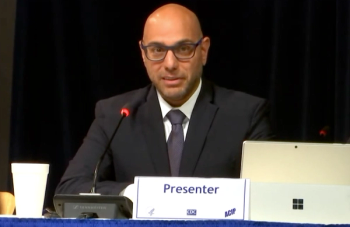
How primary care physicians should be paid
We need to rethink reimbursement for doctors and how patients are treated in the U.S. health care system.
The United States health care system is made up of many components: preventive care, primary care, urgent care, emergency care, specialists, hospitalization, home health, hospice, and many others. My approach divides the system into two separate yet integrally linked parts (primary care and everything else called major medical). My focus is on the overhaul of how we deliver primary care across this nation.
Primary care is defined as delivering a uniform and consistent set of health care services to the entire population at a set price. Primary care only involves two groups, the users of the system (patients) and the providers of the system (physicians). Physicians are specific to family practice, general practice, internal medicine, and pediatrics. The patients and physicians are the payers and players in this system. Both groups must have assets and liabilities or as they say “skin in the game” in order to make it efficient and cost effective.
The patients will choose their physician. All patients will receive the exact same menu of health care services. All patients are required to contribute to the payment for the health care system. There are direct patient “out of pocket costs” for primary care received outside of your chosen physician. There are direct patient out of pocket costs for “excessive” office visits to your primary care physician.
All patients will register into a primary care data base. All primary care physicians will register their practice profile into a nationwide data base. The patients will choose their own primary care physician from this profile data base.
At this point, a one year patient premium will be directly deposited into the physician's bank account. Each year, there will be an open enrollment period to change your physician if you choose to do so. If you choose to stay with the same physician, don't do anything and the next year’s premium will automatically be sent to your physician. If you choose to change physicians, then access the physician profile data base and select a different physician. At the end of the current contract year, your new contract year premium will be sent to your new physician.
Physicians will continue to receive patient premiums from patients enrolling until the physician's bank account has reached a specific dollar maximum. This maximum is universal for all physicians. The physician can bar a patient from contract renewal. The physician will provide the patients with a uniform set of health care services for one year. The physician is paid a specified lump sum of money for each patient's primary care. The total annul physician income is based on the enrollment.
This maximum pot of financial resources is the physician “skin in the game.” These finances will be enough for a physician to operate a solo private practice for one year, providing a uniform set of services to a specific number of patients.
The most efficient way to pay for this primary care system is to collect revenue through a point of sale consumption tax. Everyone is going to use this system for their primary care so everyone should contribute to the financing of the system! It makes no difference between individual or business. Each time a financial transaction is made in the economy, a health care tax is included in the final bill. This tax is on 100% of all purchased/sold goods and services. Food and medicine are not excluded from this tax. This is no different from all of the various taxes we pay at the gas station. It is all included in one price at the time of purchase.
I believe this primary care system will pay for itself and reduce costs to the health care system. One example is the cost of billing. It has been estimated that billing services cost the practices and the insurers 15% each of the total bill. Under my system, billing is all but eliminated because the broad-based menu of services includes everything except outpatient surgical procedures.
Ronald L. Gelzer, MD, is a family practice physician in Killeen, Texas.
Newsletter
Stay informed and empowered with Medical Economics enewsletter, delivering expert insights, financial strategies, practice management tips and technology trends — tailored for today’s physicians.















